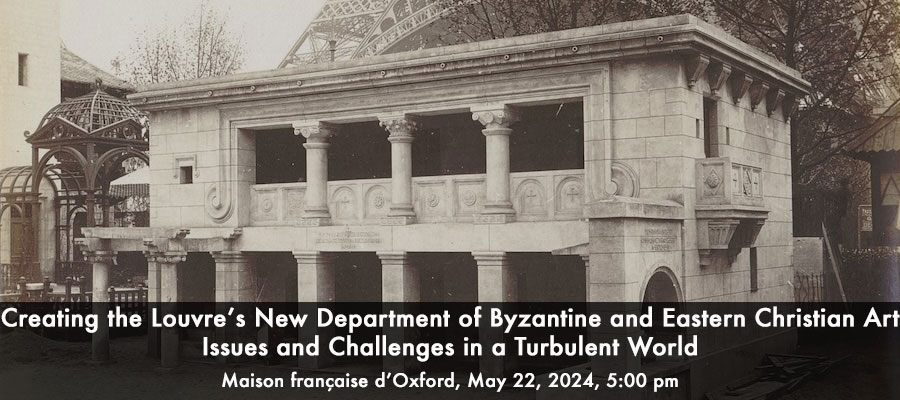Creating the Louvre’s New Department of Byzantine and Eastern Christian Art: Issues and Challenges in a Turbulent World with Maximilien Durand and Jannic Durand (Louvre Museum), Corpus Christi College (Auditorium), University of Oxford, May 22, 2024, 5:00 pm
Byzantine and Eastern Christian art forms a coherent art-historical ensemble, recognised as such by the scientific community. The Louvre’s new department is intended to bring together over 12,000 artworks currently dispersed across seven departments. The museum’s collections in this field are among the finest in the world, ranging from the beginnings of Christian imagery to the 19th century.
Key works such as the Bawit monastery, the Emesa vase, the Barberini ivory and the lapis lazuli icon from the Treasury of Saint Denis are currently on public display, but lack a meaningful presentation space illuminating their artistic and historical context. Grouping these works together in a coherent and identified space directly linked to the museum’s other departments will shed light on the connection with the late Greco-Roman world, the flourishing of Byzantine art, and its endurance in a region where the Islamic civilisation also flourished. The department’s reach will also extend to Eastern Europe and Russia. With its modernised layout and interpretation resources, the Department of Byzantine and Eastern Christian Art aims to create an informative and engaging display that will provide visitors with the historical keys to this cultural and geographic area. The first visitors should be able to discover these new rooms by 2027.
Maximilien Durand is Director of the Department of Byzantine and Eastern Christian Art at the Louvre Museum.
Jannic Durand is Emeritus Director of the Department of Works of Art at the Louvre Museum.
